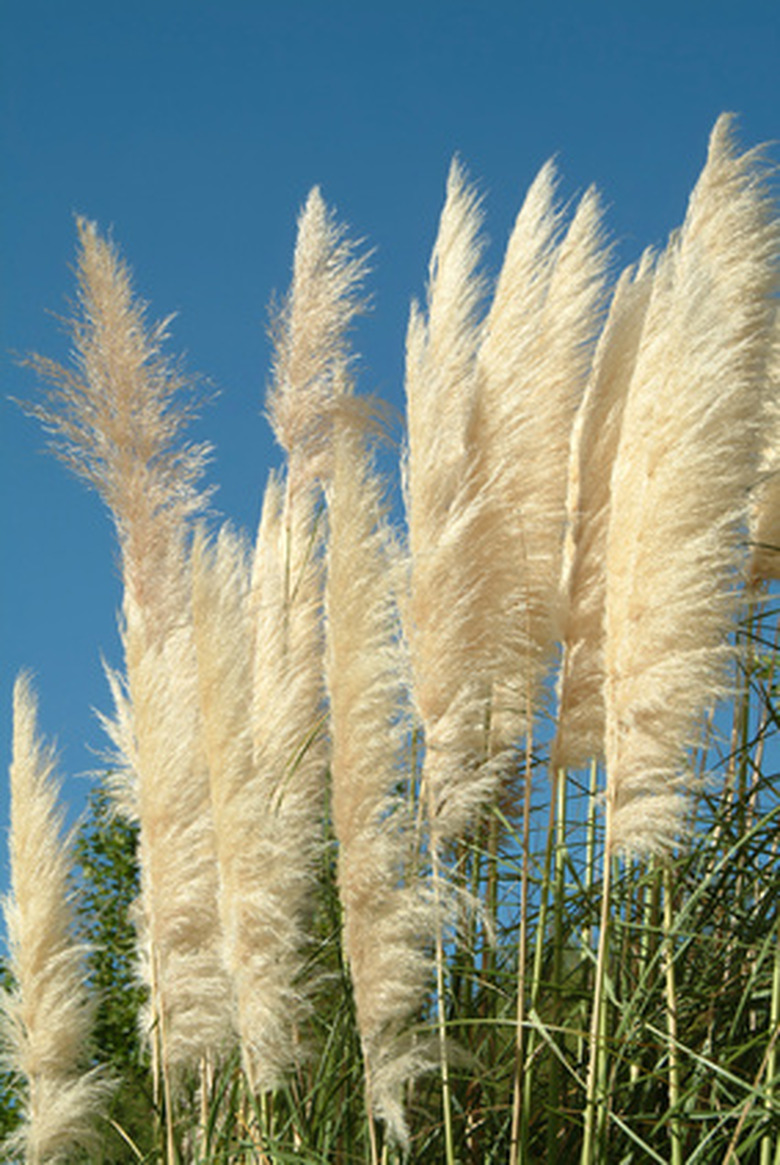Winter Care For Ornamental Grasses
Ornamental grasses–such as miscanthus, pampas, sedges, fountain grass and oat grass–have become very popular and can be found in many private and commercial gardens. Several varieties survive cold winters with little to no care and provide interest in a snow-covered garden. Ornamental grasses not only provide beauty but offer shelter to many birds and other animals during winter weather.
Winter Aesthetics
Most ornamental grass plants grow in mounds or provide a fountain effect. In the fall, the plants retain their fluffy, wide or thin textures and the foliage turns tan, bronze or reddish brown after the first frost. Cutting the foliage back will remove the vertical backdrop grasses provide in the winter garden. Snow gathering on tall sea oats lends an interesting dimension to the garden.
- Ornamental grasses–such as miscanthus, pampas, sedges, fountain grass and oat grass–have become very popular and can be found in many private and commercial gardens.
- In the fall, the plants retain their fluffy, wide or thin textures and the foliage turns tan, bronze or reddish brown after the first frost.
To Cut or Not
Most gardeners do not cut ornamental grasses in the fall or winter. The foliage helps insulate the center, or crown, from which the foliage grows. Snow may cause some breakage, but grasses grow quickly in the spring and regain a fresh appearance. In early spring, cut back the foliage to less than a foot tall, which will prompt fresh growth.
Mulch
Ornamental grasses will benefit from mulching in the late fall or winter. The most beneficial mulch is compost or leaves that have been shredded. Evergreen boughs will also provide good protection at the base of tall grasses.
- Most gardeners do not cut ornamental grasses in the fall or winter.
- Ornamental grasses will benefit from mulching in the late fall or winter.
Cold Climate Grasses
If you live in a cold climate, there are several choices of ornamental grasses. Feather reed grass produces tall stalks that resist wind and snow. Sea oats are tall and have seed heads that make a whooshing sound when the wind blows. Japanese sage stays green all year, as does tufted hair grass. Ravenna grass grows to 12 feet tall. Although it usually stays upright through heavy snow or wind, it can be tied up around the middle to keep it from falling over.
Hazards
Tall grasses planted close to structures can pose a hazard during the winter. The foliage does dry out and can be flammable. If ornamental grass grows near your house, cut back the foliage in the fall. It will grow back in the spring.
- If you live in a cold climate, there are several choices of ornamental grasses.
- Sea oats are tall and have seed heads that make a whooshing sound when the wind blows.
